Considerations for biosecurity, cost and environmental responsibility
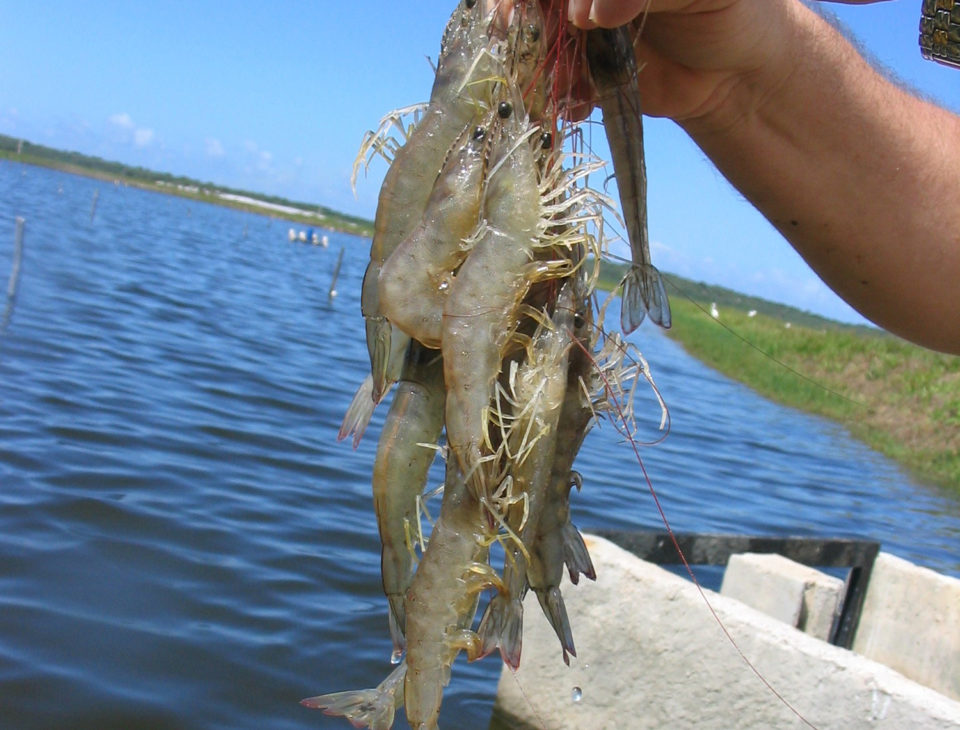
Inland culture of marine shrimp in areas away from the coast has been grown considerably in recent years. During the earlier years of the industry it had been common with the black tiger shrimp (Penaeus monodon) in various Asian countries.
Later, it expanded significantly in Asia with the introduction of the Pacific white shrimp (Litopenaeus vannamei). For example, a significant proportion of China’s farmed shrimp production is grown in “freshwater.” This expansion has also taken place in the Western Hemisphere and there are now several inland shrimp culture operations in various countries there, including the United States.
Inland shrimp farming provides several advantages over the traditional locations along the coast. An important one is enhanced biosecurity and improved control over the spread shrimp diseases, compared to the control that can be implemented in coastal areas. Biosecurity has been a very relevant topic for many years, because various viral, bacterial and parasitic diseases have caused serious problems to the industry worldwide.
When farms are sited nearby other coastal shrimp farms and their water supplies and effluents (as well as wild shrimp populations), preventing infections of farmed stocks can be expensive, difficult and often not successful. With inland shrimp farming, isolating culture operations in areas typically with low salinity waters and away from the coast, and based on certified clean seedstock, can effectively prevent the introduction and spread of pathogens.
Inland production also relocates shrimp culture from highly sensitive coastal areas and ecosystems – where often serious conflicts can arise over the use of common resources like land and water – to inland areas and more resilient ecosystems, thus minimizing potential conflicts with other users of common resources. And when farms use low-salinity water, the effluent can be used to irrigate various crops and effectively address effluent disposal issues.
Various issues must be considered in relation to the setting up and operation of a shrimp farm in inland areas, including some environmental considerations, the introduction of exotic species like the Pacific white shrimp (Litopenaeus vannamei) into areas where the species is not endemic, and postlarvae acclimation.
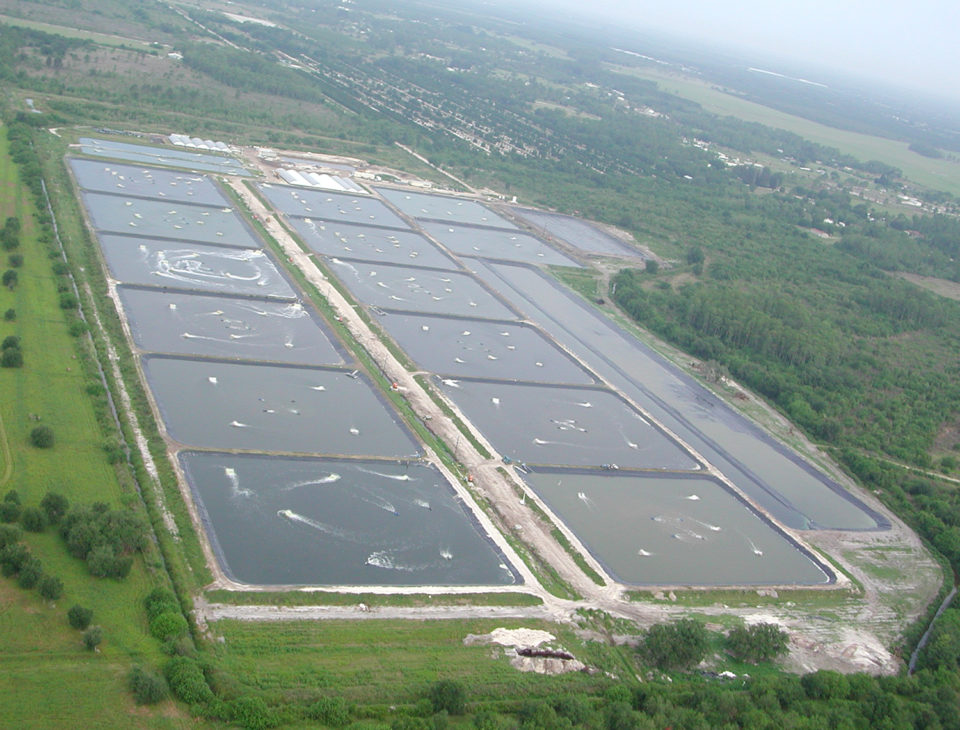
Environmental considerations
In some cases where marine shrimp farming has expanded into freshwater areas, traditional farmers and environmentalists have become alarmed about the possibility for salinization of soils and waters. Some years ago, Dr. Claude Boyd (Auburn University, Alabama, USA) suggested the following terminology to be used in reference to shrimp farming in non-traditional areas:
- There should be clear reference to “marine” shrimp as opposed to “freshwater” species.
- In regulations, it would be preferable to list the species currently cultured and to refer to other possible species that might be cultured in the future.
- “Low-salinity culture of marine shrimp” should be used to refer to the culture of these species in waters of 10 ppt salinity or less.
- For marine shrimp culture, a “freshwater” is one with a salinity of 1.0 ppt or less. Alternatively, freshwater could be defined as one with a specific conductance not greater than 1,500 mS/cm. Thus, the term “freshwater culture of marine shrimp” should be used when waters are below 1.0 ppt salinity or have a specific conductance of 1,500 mS/cm or less.
- A “freshwater area” is one where the salinity in streams and other water bodies does not exceed 1.0 ppt (specific conductance of about 1,500 mS/cm) any time during the year, and the electrical conductivity of soil does not exceed 4,000 mS/cm.
- “Inland areas” are located beyond the maximum, upstream intrusion of brackish water (greater than 1.0 ppt salinity or 1,500 mS/cm specific conductance) in coastal streams during the dry season.
- The situation of freshwater aquifers below brackish water areas should be considered in regulations.
It is very important to have reliable data on the concentrations of major cations (calcium, magnesium, potassium and sodium) and major anions (bicarbonate, sulfate and chloride) in waters considered for inland shrimp farming.
In most cases, water with 2 to 5 ppt or even greater salinity is used in production ponds. Some areas have saline underground water that may be obtained from wells and used directly or diluted with freshwater for shrimp culture. Brine solution may or salt may be mixed with freshwater to increase salinity. This makes it necessary to take precautions to prevent soil and water salinization.
Inland shrimp farms should reuse their water, which will prevent effluents from entering natural waters and will conserve saline water for shrimp culture. Water-reuse systems should have water treatment reservoirs and even wetlands to improve water quality.
Sediment should not be removed from ponds and discarded outside the farm area. Sediment from these inland shrimp ponds will have salt that will leach out after rainfalls, and this leachate could possibly affect surface and underground water and soil. Embankment ponds should be used because watershed ponds have large amounts of overflow after moderate to heavy rainfall events. Therefore, farm ponds and reservoirs should have adequate free board to store direct rainfall and avoid overflow. In addition, a shallow ditch with a low embankment on its outside should be constructed around the farm to prevent runoff of potentially saline water onto adjacent land.
Inland shrimp farms should be located in areas with soils that have adequate particle size distribution to resist seepage, prevent salinization and conserve the saline water used in culture ponds. Where needed, a clay liner or a plastic membrane may be used to reduce or prevent seepage. Having a buffer zone of vegetation around farms is useful, because its health will evidence that salinization of surface soil is not occurring. In addition, piezometer tubes may be installed at critical points and monitored to assure that salinization of the shallow aquifer is not occurring.
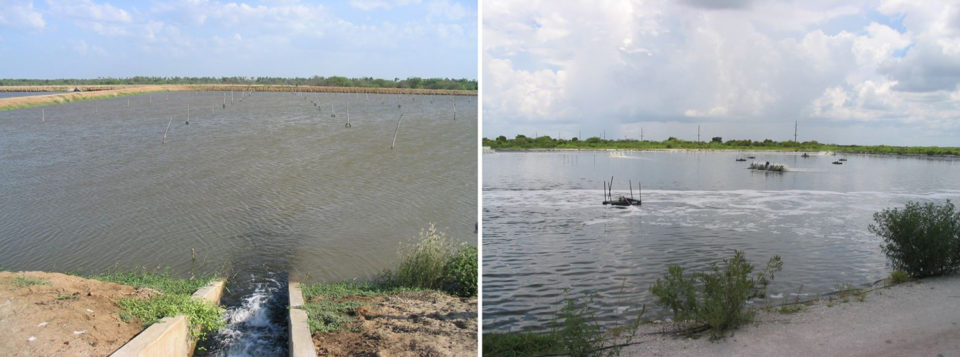
Introduction of exotic shrimp species
During the short history of the shrimp farming industry, various species have been widely introduced outside their native range. For example, starting in the early 2000s, L. vannamei was introduced into several countries in Asia, Africa and the Americas. Farmers readily accepted the new species for various reasons, including because they believed that it could grow better at lower salinities, that it would be cheaper to culture (due to lower protein feed requirements), and because it was reportedly resistant to White Spot Syndrome Virus (WSSV).
The lack of control over the quality and health status of imported L. vannamei carried a significant risk for disease introduction and exposure to shrimp diseases that already existed in the areas of introduction. As with any other non-endemic species, any introduction of exotic shrimp species into new areas must be done via approved procedures and following the proper official requirements and documentation.
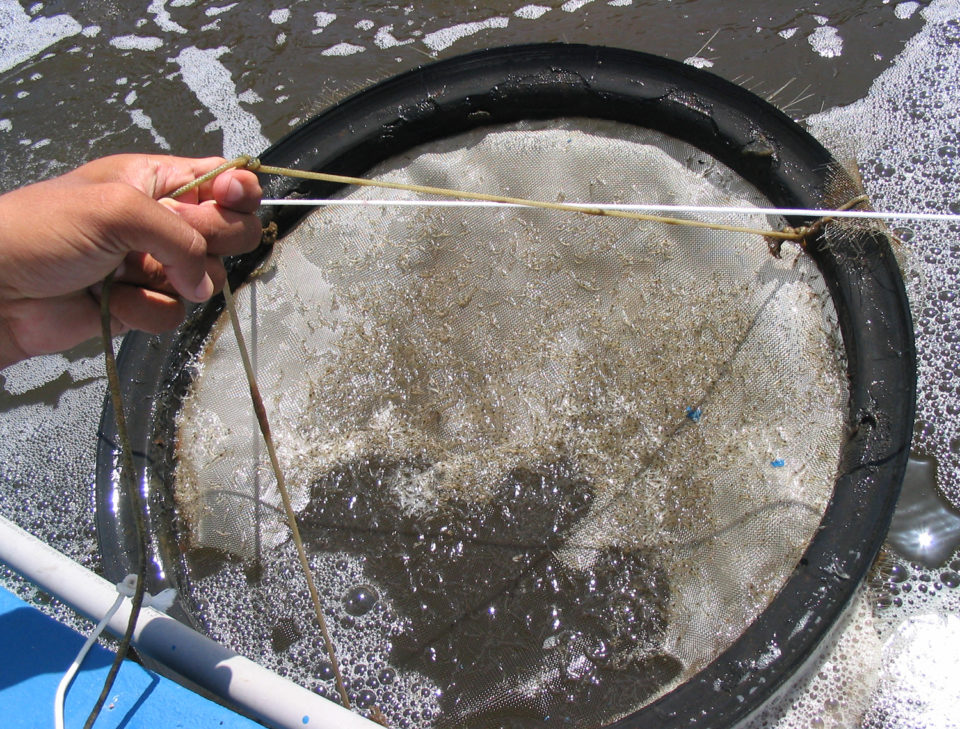
Seedstock acclimation
Acclimating seedstock to low-salinity inland waters is probably one of the most critical steps in the process of inland shrimp farming. The osmoregulatory capacity of penaeid shrimp is related to the branched development of their gills, with gill filaments developing during their later mysis substages. Early PLs still have rudimentary gills, and only reach full development in the late post-larval phases. While some penaeid species are stenohaline, several others are euryhaline and can tolerate sudden salinity fluctuations (as much as 10 ppt). Euryhaline species include L. vannamei and P. monodon, both considered strong osmoregulators.
A critical requirement for the success of low salinity culture is the acclimation process, which shrimp must undergo before pond stocking. P. vannamei can actively achieve osmotic balance and fully acclimate to low salinity environments through gradual drops in salinity levels during its post-larval stages.
Different farms have different acclimation protocols, but the overall result is positive when shrimp survival exceeds 90 percent. In hatcheries, both the chronological and morphological age of postlarvae are used to determine their acclimation readiness. Postlarvae must be at least eight days old to satisfactorily withstand a reduction in salinity, although animals as young as six days old (PL6) may also be used. With the latter, acclimation is longer, riskier and more stressful.
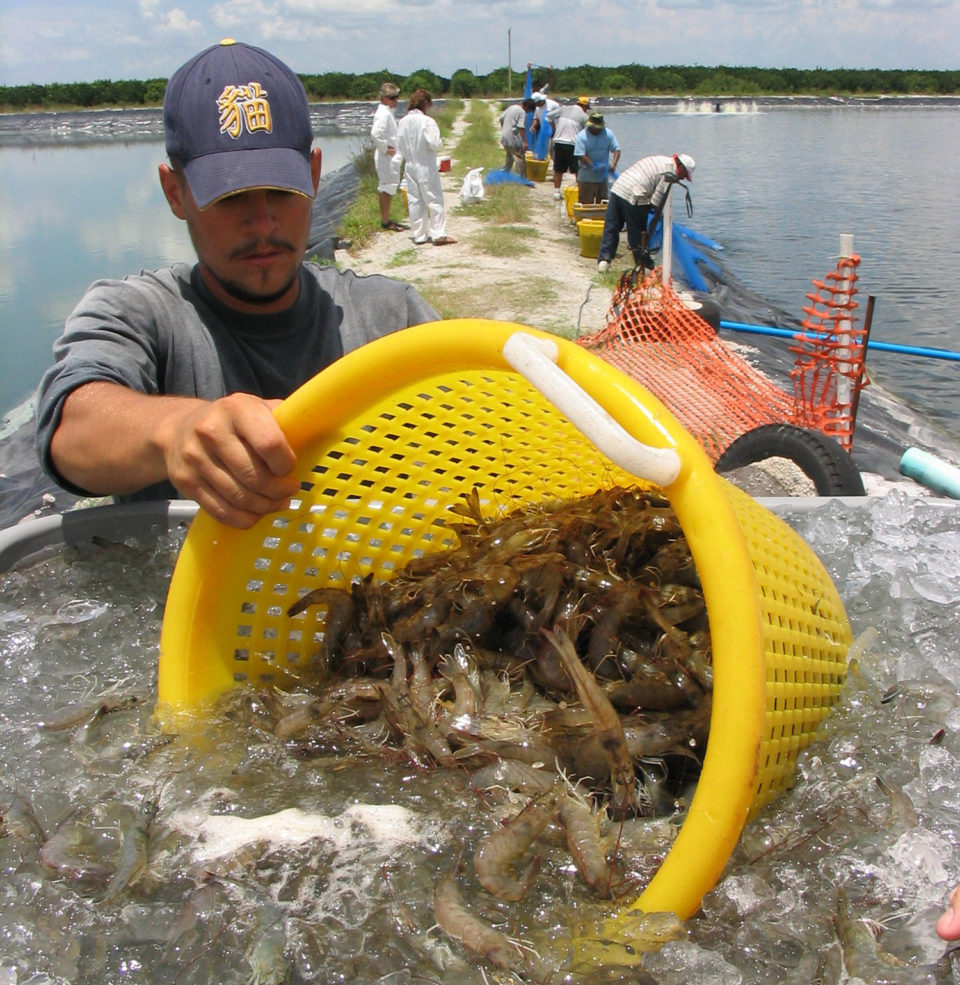
Perspectives
The inland production of some marine shrimp species – particularly L. vannamei – will undoubtedly continue to expand into new areas away from the coast, because of the numerous advantages over coastal areas due to biosecurity concerns, cost of land, and conflicts with other users of common resources in coastal zone areas, including tourism, urban development, and other activities. However, because not all water sources are suitable for inland shrimp culture, the first step when considering such an operation must be to test the water first.
Inland shrimp farming should be adequately regulated to allow for its orderly further development and operation. It has been recommended that inland shrimp farmers adopt good practices to prevent soil and water salinization, and that they also could work with governmental agencies to develop formal regulations for inland shrimp culture based on best management practices and standards for regulating inland shrimp farming. Such standards are an important step towards assuring that this activity will be implemented in a responsible manner.
Because of its suitability for inland culture, the introduction of L. vannamei into areas where it is not endemic will continue as the industry keeps expanding. It would be important that both local authorities and the private sector in these countries work together to ensure that any such imports take place within a properly planned regulatory structure, to provide adequate and practical protections that permits the safe transboundary movement of live shrimp between countries. Biosecurity concerns should be paramount to prevent further distribution of major shrimp pathogens.
An interesting synergy is the potential integration of shrimp farming in non-traditional, inland areas like deserts, and agriculture using both freshwater and saltwater for irrigation. Aquaculture and agriculture using freshwater is commonly practiced in many areas. However, integrating shrimp farming and agriculture with crop irrigation using saline wastewater from the shrimp producing facilities is probably critical for the successful expansion of shrimp farming into these coastal desert environments in many parts of the world.
Author
Tagged With
Related Posts

Health & Welfare
Acclimating shrimp postlarvae before pond stocking
Shrimp postlarvae acclimation before stocking into the various growout systems (ponds, raceways, tanks) is a critical – and often overlooked, sometimes taken for granted – step in the shrimp culture process. Various water quality parameters should be changed slowly so that the young shrimp have the time to gradually adapt to the new conditions.

Health & Welfare
Born in Hawaii, SPF broodstock shrimp industry faces globalization
The next step for shrimp breeding will be developing animals that aren’t just disease-free, but increasingly resistant to multiple pathogens. The industry is globalizing, with suppliers setting up shop overseas. But its birthplace will always be Hawaii.

Intelligence
We can grow better shrimp, and in better ways
The recent Central American Aquaculture Symposium in Choluteca, Honduras, brought together more than 600 participants to discuss industry issues and perspectives. The focus was shrimp diseases and their impacts on production, as well as practical alternatives to face these issues and move forward.

Innovation & Investment
Aquaculture America 2017: Communication key to the future
This year’s Aquaculture America in San Antonio, Texas, provided significant learning and networking opportunities. It successfully brought together 14 U.S. aquaculture organizations and more than 1,600 participants from Europe, Asia, Africa and Australia.


